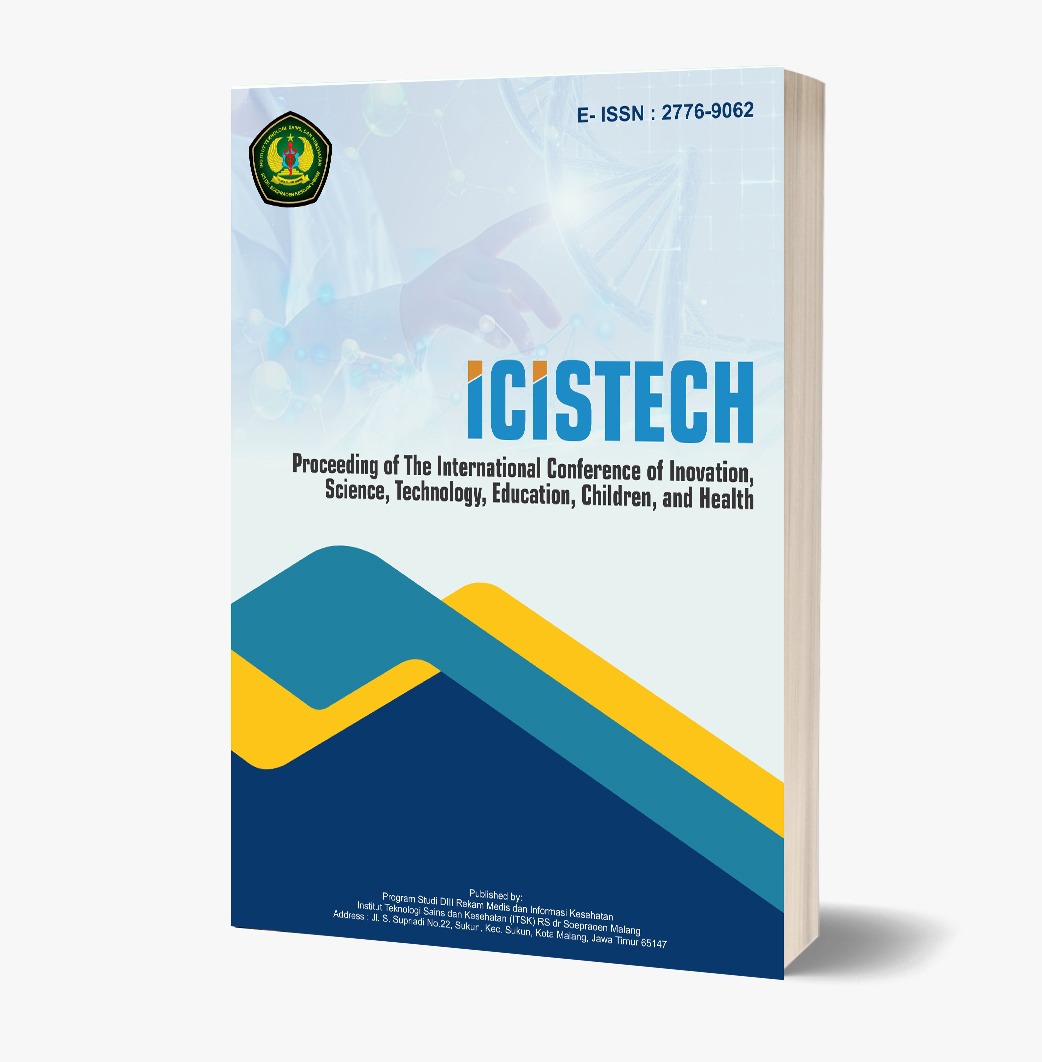The Connection Between Parity and the Incidence of Abortion in Reproductive Health Studies
DOI:
https://doi.org/10.62951/icistech.v5i1.265Keywords:
Abortion, Parity, Pregnancy, Provoked Abortion, Spontaneous AbortionAbstract
Abortion remains a significant reproductive health issue worldwide, with around 20 million cases recorded annually, leading to approximately 70,000 maternal deaths each year. In Southeast Asia, including Indonesia, approximately 4.2 million abortion cases occur annually. In Indonesia, spontaneous abortion accounts for 10-15% of all pregnancies, while induced (provoked) abortion is estimated to range from 750,000 to 1.5 million cases per year. Several factors can influence the incidence of abortion, one of which is parity the number of previous pregnancies a woman has carried to a viable gestational age. This study aims to analyze the relationship between parity and the incidence of abortion, contributing to a better understanding of how reproductive history impacts abortion rates. The research used an analytical design with a cross-sectional approach, involving a sample of 122 mothers selected through simple random sampling. The findings revealed that 45.9% of the mothers had safe parity, while 54.1% had unsafe parity. Regarding the type of abortion, 97.5% of respondents experienced spontaneous abortion, while 2.5% underwent induced abortion. Data analysis was conducted using the chi-square test at a significance level of 0.05, which produced a p-value of 0.562, indicating no significant relationship between parity and the incidence of abortion. These results suggest that parity is not a significant factor influencing abortion incidence in this sample. While other factors may contribute to abortion risk, further research is needed to explore additional variables that may play a role. This study underscores the complexity of abortion incidents and highlights the need for broader investigations to understand the diverse influences on reproductive health outcomes, beyond parity alone.
References
Afik, A. (2018). The relationship between response time and patient survival with emergency treatment by the Code Blue Team. Indian Journal of Public Health Research & Development, 9(11), 1803-1807. https://doi.org/10.5958/0976-5506.2018.01707.2
Boa, G. F., Bata, V. A., Saghu, M. M. P., & Widyastuti, R. (2024). The knowledge and socio-economic relationships of mothers with exclusive breastfeeding. Journal of Maternal and Child Health, 10(10), 1009-1015. https://doi.org/10.33024/jkm.v10i10.17868
Carretero-Krug, A., et al. (2024). Nutritional status of breastfeeding mothers and the impact of diet and dietary supplementation: A narrative review. Nutrients, 16(2), 1-28. https://doi.org/10.3390/nu16020301
Gallo, M. F., Schumacher, F. L., Lawley, M., Keim, S. A., Dupper, A. C., & Keder, L. (2024). Potential effect of immediate postpartum use of injectable contraception on lactogenesis. Contraception, pp. 1-17. https://doi.org/10.1016/j.contraception.2024.110726
Gilley, S. P., & Krebs, N. F. (2020). Infant nutrition. In Present knowledge in nutrition: Clinical applications and topics in nutrition (pp. 3-22). Elsevier. https://doi.org/10.1016/B978-0-12-818460-8.00001-0
Hastuti, A. (2023). Exclusive breastfeeding: Indonesian mothers' awareness in providing exclusive breastfeed. Akademika Jurnal Mahasiswa Humanis, 3(1), 1-9. https://doi.org/10.37481/jmh.v3i1.567
Malwela, T. (2018). Midwifery practice guidelines to promote quality care of preterm babies in resource-limited obstetric units of Limpopo Province, South Africa. [Thesis]. University of Venda. Available at https://univendspace.univen.ac.za/handle/11602/1169
Mardhika, A., Altas, R. I., Fadliyah, L., Sulpat, E., Tyas, A. P. M., & Medawati, R. (2022). Description of knowledge in exclusive breastfeeding mothers at Sukomulyo Community Health Center, Gresik. Journal of Vocational Nursing, 3(2), 110-115. https://doi.org/10.20473/jovin.v3i2.39399
Maritalia, D., Tambunan, H., & Malia, A. (2025). The influence of parity status on mother's behavior in providing exclusive breastfeeding. Journal of Health Sciences, 13(1), 43-48. https://doi.org/10.36858/jkds.v13i1.738
Maskur, S. U., Budiman, B., & Lestari, A. (2021). The relationship between knowledge and dietary habits with the incidence of chronic energy deficiency in pregnant women in the Talise City health center working area, Palu. International Journal of Health Economics & Social Sciences, 3(1), 19-27. https://doi.org/10.56338/ijhess.v3i1.1423
Nathalia, A., Rahmawati, D., Nastiti, K., & Salmarini, D. D. (2024). Factors influencing the occurrence of exclusive breastfeeding failure in six-month-old infants. Health Science International Journal, 2(2), 96-103. https://doi.org/10.71357/hsij.v2i2.31
National Center for Biotechnology Information (NCBI). (2021). Medroxyprogesterone acetate drug levels and effects in breastfed infants. MD, pp. 1-6.
Singhal, S., Sarda, N., Gupta, S., & Goel, S. (2014). Impact of injectable progestogen contraception in early puerperium on lactation and infant health. Journal of Clinical Diagnostic Research, 8(3), 69-72. https://doi.org/10.7860/JCDR/2014/7775.4110
Szyller, H., et al. (2024). Child's health and development, literature review. Nutrients, 16(10), 1487. https://doi.org/10.3390/nu16101487
Wahyuni, R. S., & Hutasoit, E. S. (2023). The correlation of the use of hormonal contraception devices and breastfeeding production in breastfeeding mothers at Puskesmas Rejosari Pekanbaru. Proceeding 2nd Payung Negeri International Health Conference, 2(1), 299-304.
Downloads
Published
How to Cite
Issue
Section
License
Copyright (c) 2025 Proceeding of The International Conference of Inovation, Science, Technology, Education, Children, and Health

This work is licensed under a Creative Commons Attribution-ShareAlike 4.0 International License.













